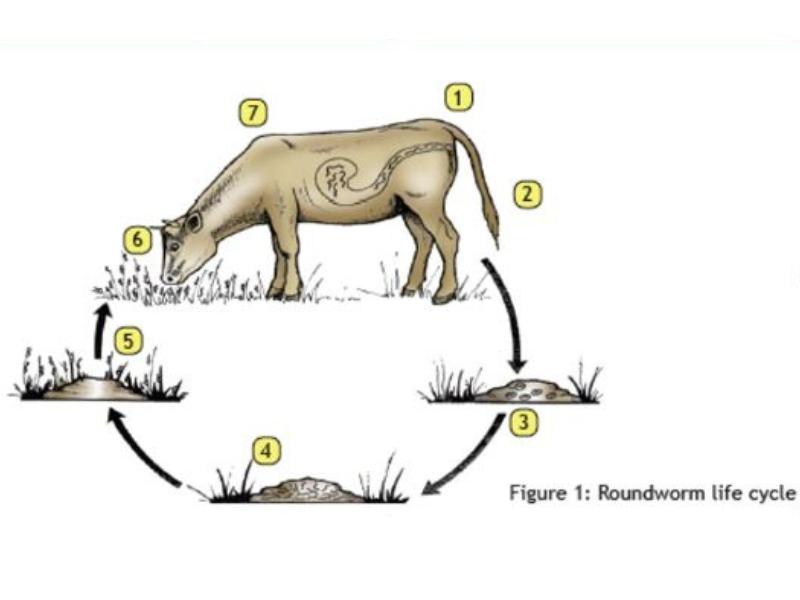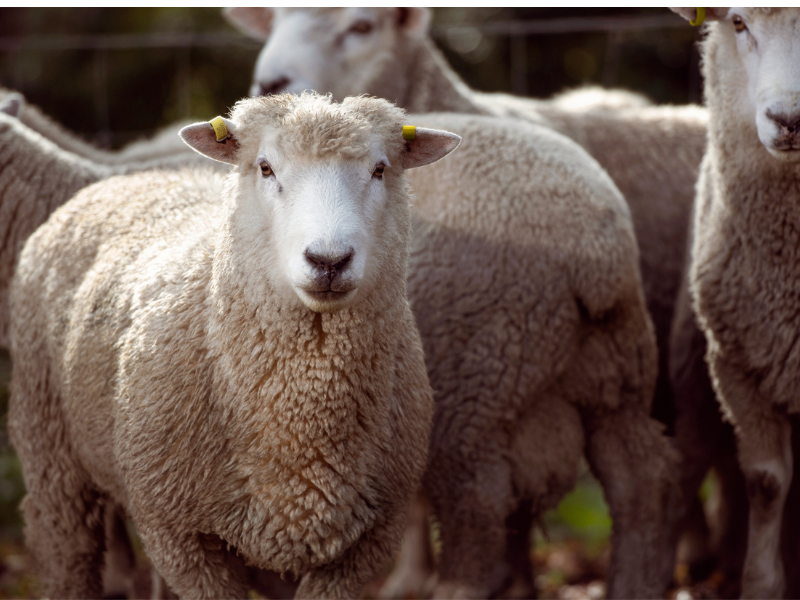

Types of Worms on Farms in NZ
Every farm in New Zealand has worms. These cost farmers due to:
• Reduced weight gains, deaths, prolonged maintenance feeding.
There are three types of worms: round, tape and fluke. This article will focus only on roundworms, as these are the most significant worms for livestock. Worms are known by several names: a common name, a family or genus name, and a species name.
The six important families of roundworms in New Zealand are shown in Table 1.
Table 1:
| Common name Genus species | Significance |
|---|---|
| Barber’s Pole Worm Haemonchus contortus | Haemonchus are only a problem in sheep and in warmer areas of New Zealand. As worm numbers can build up quickly and they suck blood, ill thrift and death can be rapid in lambs; ewes can also be affected. |
| Small Brown Stomach Worm Teladorsagia circumcincta Ostertagia ostertagi | Teladorsagia (previously known as Ostertagia) are found only in sheep, and cause production losses on farms all over New Zealand. Ostertagia is the most important worm in cattle. Immature stages of this worm can remain dormant in the stomach wall for several months. Rarely, large numbers emerge together and cause a disease called Type II Ostertagiasis, which can result in death. |
| Stomach Hair Worm Trichostrongylus axei Black Sour Worm Trichostrongylus: colubriformis longispicularis | Trichostrongylus are a major parasite of both sheep and cattle, especially in late autumn and winter. |
| Small Intestinal Worm Cooperia: curticei oncophora punctata | Cooperia are not a major parasite of sheep, but can be an issue in young cattle, especially as this worm is normally resistant to ML (macrocyclic lactones: mectins or endectocides) drenches. |
| Thin-necked Intestinal Worm Nematodirus: filicollis spathiger abnormalis helvetianus | Nematodirus are only a problem in sheep and cause more problems in colder regions. Disease is most common in young lambs, even prior to weaning. |
| Lungworm Dictyocaulus: filaria viviparous | Lungworm is an important parasite of cattle and deer. If present in large numbers they cause snotty noses, coughing and respiratory disease. |
Understanding The Worm Life Cycle?
The worm lifecycle is illustrated in Figure 1. It starts with adult worms laying eggs in the animal’s gut. Eggs are passed in the faeces and, if environmental conditions are right, the immature larvae will hatch and develop into infective larvae on pasture. If eaten by non-immune stock, these larvae mature into adults in the animal’s gut and the cycle repeats.

- Adult female worms lay eggs in the gut.
- Worm eggs are passed out with the dung.
- Worm larvae hatch from eggs and moult twice in the dung. Eggs only hatch if it is moist, and the temperature is above about 10°C. Haemonchus worms require much warmer conditions to develop. If eggs do not hatch within about 10 days, they die. In moist conditions larvae develop from L1 to L3 within 1 week if it is warm, or up to 10 weeks as the temperature decreases. If dry, larvae die rapidly.
- Infective larvae live in the dung and first centimeter of soil. In the warmer, summer months, larvae may only survive for 2-3 months. However, in the cooler temperatures, larvae can survive for up to 8 months, and in some cases, more than a year. This is important in terms of pasture spelling. L3 survival on pasture depends not only on the season, but also the microclimate, e.g., dung volume, pasture density and type. L3 can over-winter and infect the next season’s lambs or calves Nematodirus, Ostertagia/Teladorsagia and Trichostrongylus are particularly hardy and survive freezing.
- Infective larvae (L3) crawl from dung onto grass. Most larvae are on the bottom 2cm of pasture; therefore, grazing management strongly influences L3 intake.
- Infective larvae (L3) are eaten with grass. The number of larvae ingested is called the larval challenge. In general, the higher the larval challenge, the greater the effect worms have on production.
- Larvae grow to adults and mate in the gut. It takes about 21 days for ingested larvae to develop to egg-laying adults. This is called the prepatent period. Lungworm’s lifecycle is similar to other roundworms on pasture, but in the animal the infective larvae travel in the blood to the lungs and the eggs laid by adult’s hatch in the lungs. The first stage larvae “swim” up the windpipe and are then swallowed and passed out in the dung.
Learn more about immunity against worms.


